Up and ready a bit passed 9 am, we were on track to do a full day of sightseeing. We checked out of our hotel and drove into town. As we were looking for parking, we noticed several roads were blocked by the police. Hmm.. there must be an important government official coming through or maybe they are filming a movie!
We found our way to the visitor’s office, which is always a great stop if you want to get some quick info on what to see with a time constraint. A cute blond was very helpful and gave us a rundown of the must-dos in Belfast.
Then we asked about the special occasion that the police were guarding.
”Oh, that’s just a bomb scare!”
Nat and I awkwardly glance at each other…
”Don’t worry about it! We get them ALL the time! Nothing ever happens…” She says with a smile.
“Usually…”, she adds as her smile turns into a frown.
We nod slowly, while still awkwardly glancing at each other…
City Hall
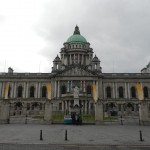 Right outside the visitor’s center is probably the most prominent building in Belfast, the City Hall. It was proudly displaying the Olympic rings for London 2012. A gentle reminder that we are now on UK territory?
Right outside the visitor’s center is probably the most prominent building in Belfast, the City Hall. It was proudly displaying the Olympic rings for London 2012. A gentle reminder that we are now on UK territory?
The City Hall was completed in 1906 in a distinctive Baroque Revival architectural style. The green copper covered domes sit proudly above the city.
Linen Hall Library
From there we walked by Linen Hall Library, which happened to be closed (as it was Sunday). The library had a tumultuous history that has now made it a landmark in the city. Basically in 1788 a bunch of bookworms got together and said “Hey, lets make a club for people who wanna be smart like us!” and started collecting books, thus was born the Belfast Reading Society. From that point on the collection, later turned library, moved to a number of different locations due to bombings, construction, etc. and finally purchased a 999 year lease on the current property in 1996. The name came from the first location it was in “White Linen Hall” which was a place to trade linen (at the time the best linen came from Belfast). It almost closed down in the 80s due to money problems but was saved because it focused on Irish historic and cultural literature.
Royal Belfast Academical Institution
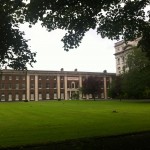 We then went towards the RBA Inst, which is a grammar school established in 1810. This was the section sealed off by the police for the bomb scare, so we couldn’t get very close to it, nor did we want to.
We then went towards the RBA Inst, which is a grammar school established in 1810. This was the section sealed off by the police for the bomb scare, so we couldn’t get very close to it, nor did we want to.
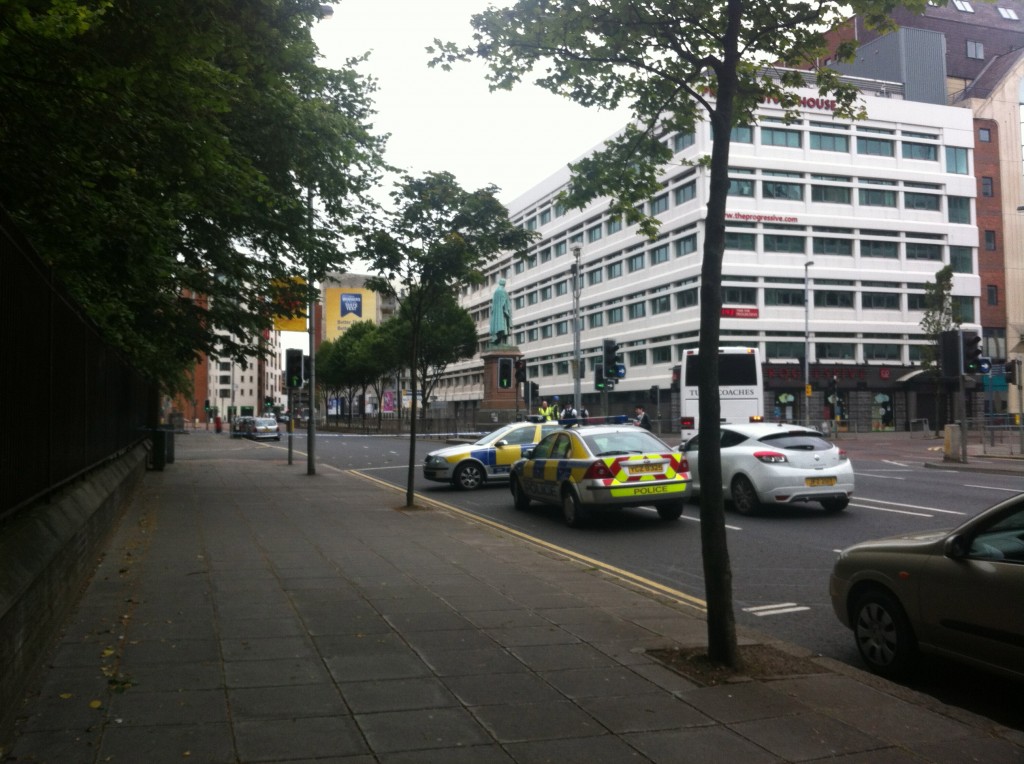
Grand Opera House
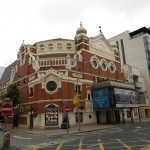 South of the school is the Grand Opera House, an opulent yet tacky building first opened in 1895. It also has been through a lot during its long history but has survived till today and is still active as a theater. Eisenhower and Montgomery even celebrated the end of WWII here!
South of the school is the Grand Opera House, an opulent yet tacky building first opened in 1895. It also has been through a lot during its long history but has survived till today and is still active as a theater. Eisenhower and Montgomery even celebrated the end of WWII here!
Europa Hotel
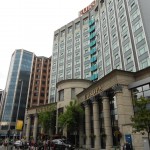 Next door is the four-star Europa Hotel, infamous for being “the most bombed hotel in the world”! This hotel, opened in 1971, was bombed 28 times during “the Troubles”. We walked into the small lobby and just looked around imagining the scene of the chaos right after a bomb blast. It was quite uncomforting to be there, especially during a bomb scare. I also noticed a plaque behind the check-in proudly mentioning that Bill and Hillary Clinton stayed here in 1995.
Next door is the four-star Europa Hotel, infamous for being “the most bombed hotel in the world”! This hotel, opened in 1971, was bombed 28 times during “the Troubles”. We walked into the small lobby and just looked around imagining the scene of the chaos right after a bomb blast. It was quite uncomforting to be there, especially during a bomb scare. I also noticed a plaque behind the check-in proudly mentioning that Bill and Hillary Clinton stayed here in 1995.
Crown Bar
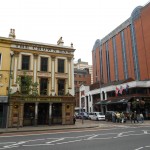 Right across the street was the famous 1885 Crown Bar. Arguably the most famous pub in Belfast, it is known as a great example of a Victorian Gin Palace. We peaked in to see beautifully tiled floor, ornate wooden stalls, and colorful stained glass windows. Unfortunately they also were not open yet, so we had to look elsewhere for lunch.
Right across the street was the famous 1885 Crown Bar. Arguably the most famous pub in Belfast, it is known as a great example of a Victorian Gin Palace. We peaked in to see beautifully tiled floor, ornate wooden stalls, and colorful stained glass windows. Unfortunately they also were not open yet, so we had to look elsewhere for lunch.
Saint Malachy’s Church
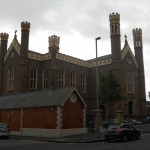 Walking east across town we stopped at Saint Malachy’s Church, a Catholic church in Tudor Revival style, completed in 1844. Apparently it was suppose to be a cathedral, but as it was being built during the Great Famine, the funds were allocated elsewhere and what stood in front of us was built instead. It extra tall towers were interesting but I wasn’t overly impressed. Fortunately there was another church around the corner.
Walking east across town we stopped at Saint Malachy’s Church, a Catholic church in Tudor Revival style, completed in 1844. Apparently it was suppose to be a cathedral, but as it was being built during the Great Famine, the funds were allocated elsewhere and what stood in front of us was built instead. It extra tall towers were interesting but I wasn’t overly impressed. Fortunately there was another church around the corner.
May Street Church
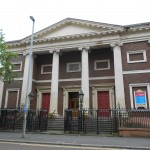 We found May Street Church to be even less impressive than St. Malachy’s! It looked more like a museum than a church with its Roman columns. We didn’t stay long as our stomachs were grumbling.
We found May Street Church to be even less impressive than St. Malachy’s! It looked more like a museum than a church with its Roman columns. We didn’t stay long as our stomachs were grumbling.
St. George’s Market
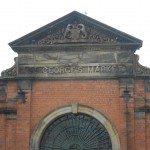 We almost walked passed the market but saw a sign saying it was open. We walked in to find the large room quite busy with live music, boutiques, and freshly made food for sale. We walked around and considered the “Titanic Burger (made with Iceberg lettuce… get it?)” but settled on a local snack, a bap. A bap is a simple sandwich on a big roll with egg, sausage, bacon and cheese covered in a sauce of your choice. I smothered mine in BBQ sauce and it definitely hit the spot. We sat at a table with two locals for a day in town. They were very friendly and talked about the touristy things to do mostly. After sharing a meal together we said bye and headed out!
We almost walked passed the market but saw a sign saying it was open. We walked in to find the large room quite busy with live music, boutiques, and freshly made food for sale. We walked around and considered the “Titanic Burger (made with Iceberg lettuce… get it?)” but settled on a local snack, a bap. A bap is a simple sandwich on a big roll with egg, sausage, bacon and cheese covered in a sauce of your choice. I smothered mine in BBQ sauce and it definitely hit the spot. We sat at a table with two locals for a day in town. They were very friendly and talked about the touristy things to do mostly. After sharing a meal together we said bye and headed out!
Royal Courts of Justice and Laganside Courts
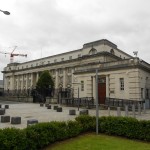
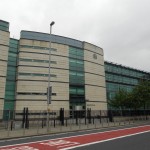
Belfast Waterfront
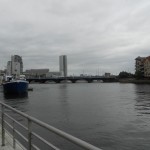 Across the street is the newly developed area with a nice view of the River Lagan. The Waterfront Hall, an auditorium opened in 1997 with a capacity to seat 2,241 people is front and center.
Across the street is the newly developed area with a nice view of the River Lagan. The Waterfront Hall, an auditorium opened in 1997 with a capacity to seat 2,241 people is front and center.
Victoria Square
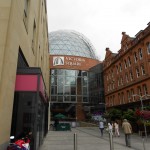 We stopped at this newly opened mall for a pint of Guinness and cider at the Kitchen Bar right at the entrance. It was a fun pub with quite a few people for midday… but maybe that’s just the Irish.
We stopped at this newly opened mall for a pint of Guinness and cider at the Kitchen Bar right at the entrance. It was a fun pub with quite a few people for midday… but maybe that’s just the Irish.
After a drink, we went up to the top of the glass dome of the mall. It presented a nice view over Belfast plus no entrance fee! Since the mall was opened in 2008, it was very clean and modern. It even had an Apple store.

Albert Memorial Clock Tower
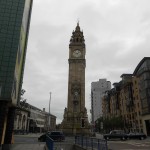 Further north we found the leaning tower of… Belfast. It is named after the sweet Prince Albert. This tower leans 4 feet from the top but we’ve been told that they’ve secured it so it won’t topple over. Good to know when you’re standing under it to take pictures. The lean is due to the foundation sitting on wooden piles over marshy reclaimed land. It was completed in 1869 and remains a landmark of Belfast. Now the area is empty except for a few tourists, but back in the day it was a hangout for the local prostitutes working on the visiting sailors from the port. Not surprisingly it was also damaged by a bomb from the IRA in 1993.
Further north we found the leaning tower of… Belfast. It is named after the sweet Prince Albert. This tower leans 4 feet from the top but we’ve been told that they’ve secured it so it won’t topple over. Good to know when you’re standing under it to take pictures. The lean is due to the foundation sitting on wooden piles over marshy reclaimed land. It was completed in 1869 and remains a landmark of Belfast. Now the area is empty except for a few tourists, but back in the day it was a hangout for the local prostitutes working on the visiting sailors from the port. Not surprisingly it was also damaged by a bomb from the IRA in 1993.
Custom House
Behind the clock tower is the Custom House, built in 1856, which is an excellent example of the “Palazzo” style of neoclassical architecture. I took a picture with the paperboy statue out front.
St. Anne’s Cathedral
 Continuing north, we came upon the massive cathedral next to the University of Ulster. The cathedral was built 1899-1904 and was also bombed badly, but not by the IRA, this time it was the Germans during WWII! In 2007 a huge spire, “Spire of Hope” was added to the roof with a glass section for viewing from the inside. Interestingly the spire is a memorial for the victims of 9/11. I wonder if it’s a coincidence that it kind of looks like a plane sticking out of the church…
Continuing north, we came upon the massive cathedral next to the University of Ulster. The cathedral was built 1899-1904 and was also bombed badly, but not by the IRA, this time it was the Germans during WWII! In 2007 a huge spire, “Spire of Hope” was added to the roof with a glass section for viewing from the inside. Interestingly the spire is a memorial for the victims of 9/11. I wonder if it’s a coincidence that it kind of looks like a plane sticking out of the church…


St. Patrick’s Church
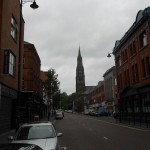 Even further north is another church, which we quickly glanced at. A cute little red-bricked church built in 1877.
Even further north is another church, which we quickly glanced at. A cute little red-bricked church built in 1877.
Then back to the car, but first one last coffee before going. We stopped by a hip little green café serving smoothies and coffee. With some caffeine in our systems we headed on Shankill Road.
Shankill Road
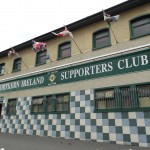 It is very apparent that you are entering loyalist/unionist territory when you drive down this street. British flags proudly line the streets on both sides and are strung above the streets. It seems as if there is a parade about to go through, but its just the declaration of the grounds that you are on.
It is very apparent that you are entering loyalist/unionist territory when you drive down this street. British flags proudly line the streets on both sides and are strung above the streets. It seems as if there is a parade about to go through, but its just the declaration of the grounds that you are on.
This road is infamous for its history during the Troubles. Several IRA bombs went off throughout the area, including the worst one, aptly named the Shankill Road Bombing, killing 9 people in 1993.
The Ulster Volunteer Force (UVF) started on this road with their own bombing when they threw a petrol bomb into a catholic owned pub, which resulted in the death of a widow next door. Driving through the area we came across several murals depicting the pride of the loyalists.
It’s a bit unsettling how recent and real it is…

We then drove south to check out the Queen’s Quarter district.
Queen’s University
This institution was founded in 1810 and has an impressive main building. The grounds were quite big and the area definitely felt like a University district even if it was off school! Liam Neeson graduated from here and learned a very particular set of skills…
Driving across the river we visited the newly developed area, Titanic Quarter.
Titanic Quarter
 Some may know (I didn’t) that the Titanic was built in Belfast, which at the time was considered one of the finest shipbuilding areas. This is one of the city’s major claims to fame, so they devoted a whole section to the theme. The recently finished Titanic Belfast is the most apparent building when you drive up. The silver ship like angles is a monument and exhibition dedicated to Titanic and its history. It was very recently opened on March 31, 2012. The slipways where Titanic was built and took off from are also visible. Goliath and Samson building dock cranes still stand across the road, but the company has moved their headquarters already. Going further north we saw the HMS Caroline a British warship built in 1914 and survived two world wars… It was only decommissioned in 2011, meaning it was in use for 97 years! It is still floating in Alexandra Graving Dock, but not in working condition anymore.
Some may know (I didn’t) that the Titanic was built in Belfast, which at the time was considered one of the finest shipbuilding areas. This is one of the city’s major claims to fame, so they devoted a whole section to the theme. The recently finished Titanic Belfast is the most apparent building when you drive up. The silver ship like angles is a monument and exhibition dedicated to Titanic and its history. It was very recently opened on March 31, 2012. The slipways where Titanic was built and took off from are also visible. Goliath and Samson building dock cranes still stand across the road, but the company has moved their headquarters already. Going further north we saw the HMS Caroline a British warship built in 1914 and survived two world wars… It was only decommissioned in 2011, meaning it was in use for 97 years! It is still floating in Alexandra Graving Dock, but not in working condition anymore.
So that was Belfast in just over half a day. Nathalie and I headed to our next destination via the coastal route, which was a beautiful drive.
Carrickfergus
We stopped in the town of Carrickfergus (meaning “rock of Fergus”) to visit Carrickfergus Castle. This impressive castle was built in 1171 and as you can imagine went through more wars than necessary. It was besieged by the British, Scots, Irish, and French. Now it stands as a well preserved example of a medieval castle.
We continued and it was a straight drive besides a quick stop at the marina of a small town for a snack.
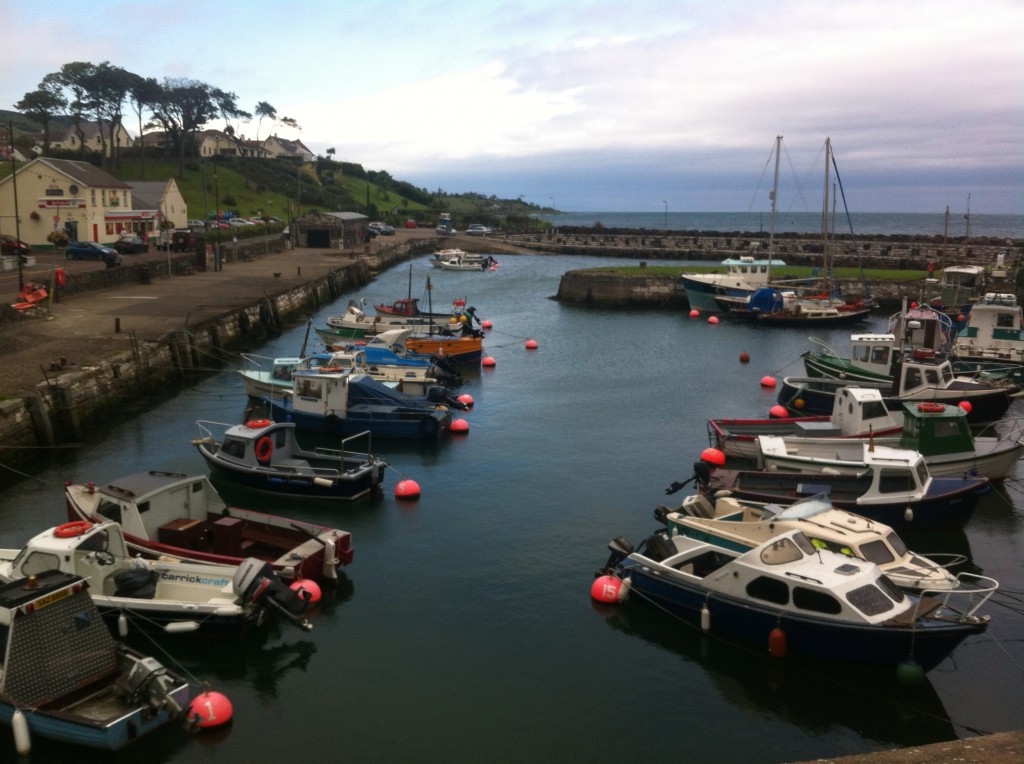
Carrick-a-Rede Rope Bridge
 We arrived just before the park closed to hike and then walk across the shaky rope bridge. The bridge leads to a small island that is abandoned besides a shack and some sea birds nesting on it. The bridge itself wasn’t very difficult to cross though they have staff from the National Trust on both sides to aid anyone having difficulty crossing. The coastline was beautiful and invigorating. I later saw that the islands in the distance were Scottish islands, including Islay, which I would be visiting in a few days.
We arrived just before the park closed to hike and then walk across the shaky rope bridge. The bridge leads to a small island that is abandoned besides a shack and some sea birds nesting on it. The bridge itself wasn’t very difficult to cross though they have staff from the National Trust on both sides to aid anyone having difficulty crossing. The coastline was beautiful and invigorating. I later saw that the islands in the distance were Scottish islands, including Islay, which I would be visiting in a few days.
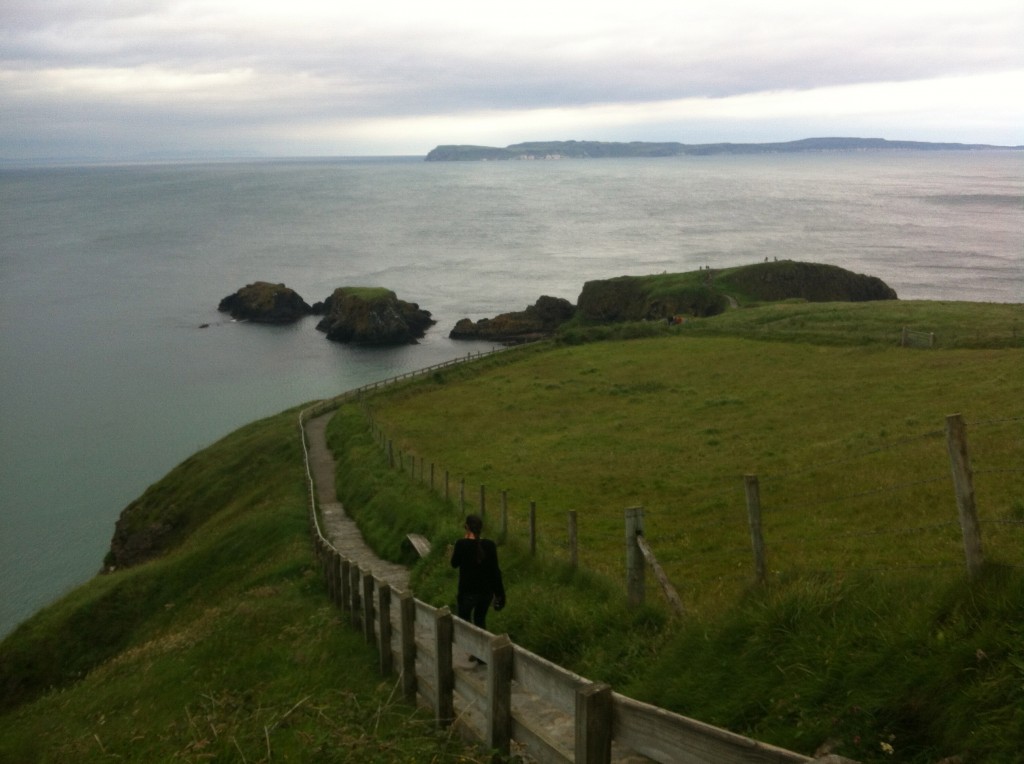
Giant’s Causeway
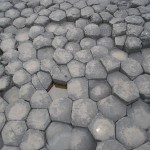 A few minutes drive was the famous Giant’s Causeway. It started raining on the way over, but cleared up as soon as we arrived. We were really lucky with the weather all day. Entering the park, which is a UNESCO World Heritage Site, we went through the visitor’s center to buy our tickets and set off to the stony beach. Audio-guides were included so we were stuck the earpieces listening to bad jokes as we walked down to the causeway.
A few minutes drive was the famous Giant’s Causeway. It started raining on the way over, but cleared up as soon as we arrived. We were really lucky with the weather all day. Entering the park, which is a UNESCO World Heritage Site, we went through the visitor’s center to buy our tickets and set off to the stony beach. Audio-guides were included so we were stuck the earpieces listening to bad jokes as we walked down to the causeway.
The formation is due to the cooling of volcanic rock and the cracking of it in these shapes. But we also learned of the legend of Finn MacCool, who built this causeway all the way to Scotland only to confront a giant, Benandonner, who he ends up tricking (by pretending to be a baby… don’t ask) and the giant destroys the bridge as he runs back to Scotland with his tale between his legs.
The area was really beautiful and special. I felt like I was on a different world. The basalt columns were mostly hexagonal, but I found some that didn’t have six sides. One section rose high above the ground and lead into the sea. Our timing was great because it was quite empty due to the rain just minutes ago, but the sun was out for us! We spent quite some time exploring and taking pictures.
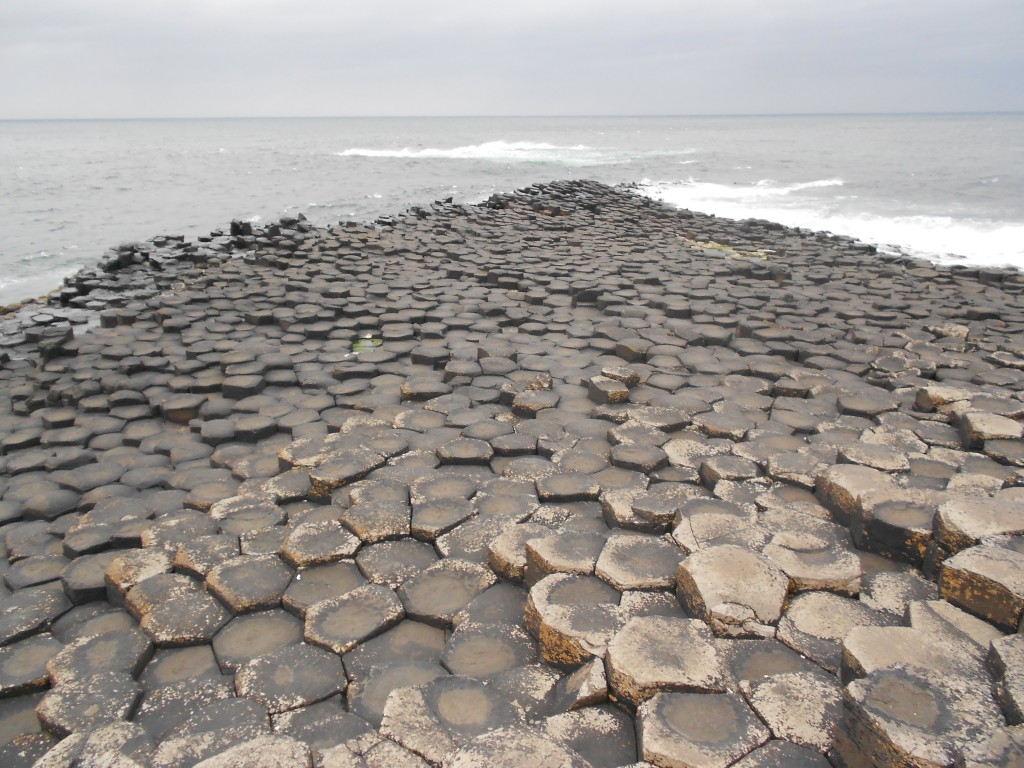
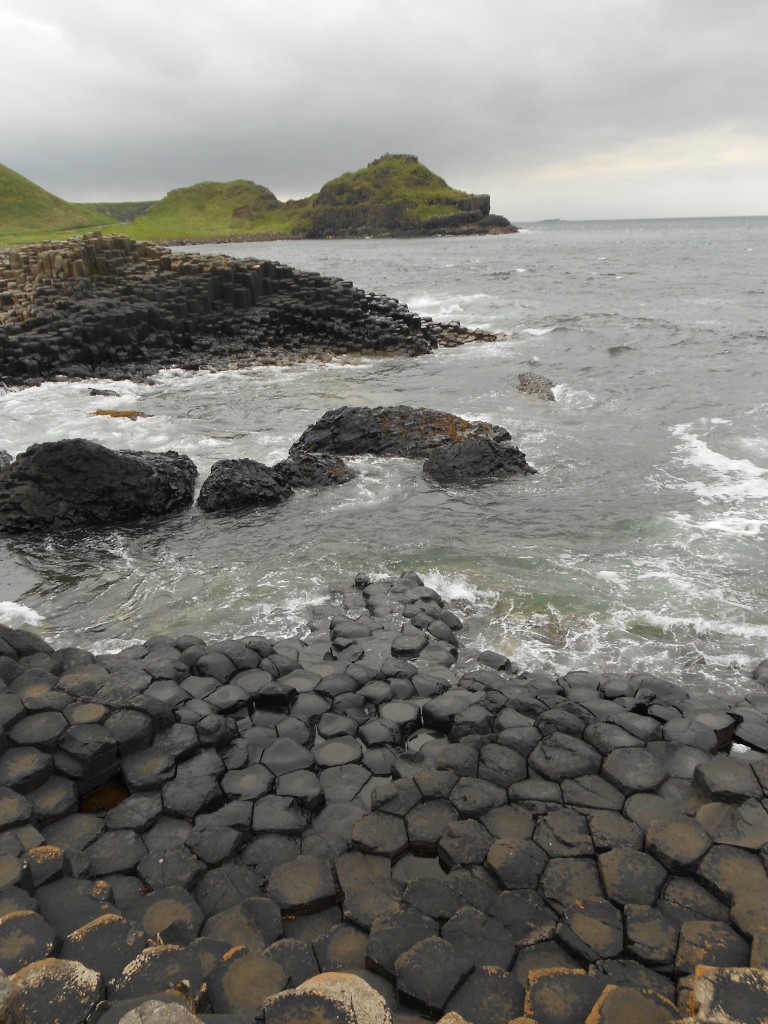
Since we had daylight until passed 10 pm, we maxed it out and it turned out to be a really long day. We were ready to get to our hotel in Derry, a few hours away. We stopped in a small town at an amazing fish and chips restaurant, Flash in the Pan, where I bought the largest piece of fried fish that I’ve ever seen.
We fought off sleep to arrive safely, checked in, and soon enough passed out.

Pingback: Fighting for Air at the London Olympics Closing Ceremony at Victoria Park - David De Clercq()
Pingback: A UK Olympic Summer Month - David De Clercq()
Pingback: A Misstep is Death on the Cliffs of Moher - David De Clercq()